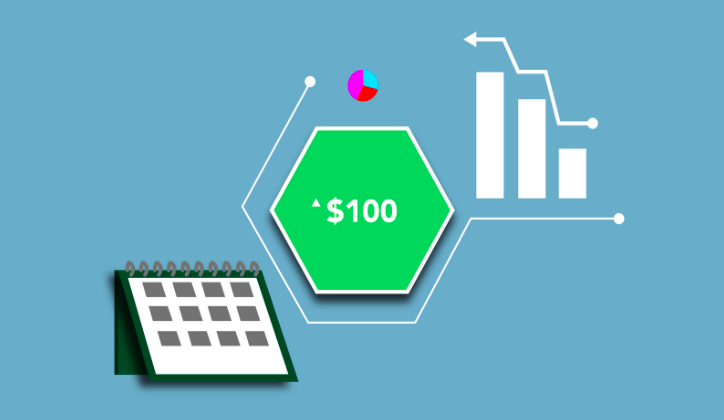
Economic Calendar
A type of platform used to follow economic events, dates, and data releases that are influential to changes in security prices or capital markets as a whole
An economic calendar is a platform to follow economic events, dates, and data releases that may influence security prices or capital markets changes.

Investors use these calendars to study economic indicators and data. They watch for trends or patterns in various charts related to economic events.
These factors can change the market sentiment and inflict volatility. Therefore, the patterns seen may alter the way investors plan trades.
It is usually depicted as a chart with a year's days, weeks, and months. An individual can choose the country or currency and particular date to observe a list of potentially market-moving events displayed in chronological order.
Most events fall into two categories: reports on previous financial or economic events and predictions of future ones.
The timings of the events and data releases may differ by country and region. For example, most events happen monthly, some occur quarterly, and others are reported weekly.
The economic calendar for forex, or the foreign exchange market, is quite like the one for stocks. On top of the same events and reports, it also includes events in the countries of the pairs being traded and is influenced by monetary and fiscal policy decisions.
So, economic calendars hold reliable and accurate information that is beneficial and important because it gives investors:
- Access to macroeconomic data
- Track how economies are doing to aid trading Forex through fundamental analysis
- Opportunity to closely watch the countries of the currencies one aims to trade
- Chance to avoid harmful surprises
- Knowing when highly volatile data or fluctuations are to be released aids in planning trades
Understanding the Economic Calendar and Economic Indicators
Economic indicators carry significant figures and pieces of information displayed on economic calendars. As a result, investors can examine the financial performance of an area and make predictions based on the data presented.

As further explained below, examples of indicators shown include interest rates, inflation data, unemployment, and gross domestic product.
Interest Rates
- If interest rates start to increase, holding cash becomes more attractive.
- After a central bank's announcement, there is some commentary around expert forecasts predicting what the economic environment will look like.
- Provides insight into the perspectives of the Federal Reserve in the US or other central banks on the state of their economy
Inflation Data
- It includes indexes like the consumer price index (CPI), which measures the cost of living.
- As inflation increases, it impacts a central bank's interest rate policy.
- Adjust interest rate to counter inflation
Unemployment
- Non-farm payrolls are a measure used to highlight monthly US employment data. It expresses the number of jobs added or lost in the economy in the previous month.
- Data on what affects the US economy is also essential to the global economy, as the US is a leading global trader.
Gross Domestic Product (GDP)
- The critical value to study here is growth, as represented by a percentage and typically reported quarterly or annually.
- Studying such data reflects how well the economy is doing and patterns around whether the economy has been growing or slowing down.
Below is a quick YouTube video explaining the terms used in economic calendars:
The significance of studying economic calendar terms is partly about the absolute number but more about how it differs from the market's expectation. After these announcements come out, a lot of volatility can occur short-term in markets like currencies, stocks, and commodities like gold and oil.
Using the Economic Calendar
It facilitates studying economic events and indicators that impact markets in various economies. Thus, users can get a heads-up about what the markets expect in the coming days, weeks, and months.

Data is displayed in chronological order with a countdown and automatically refreshed when new data is released. In addition, individuals can enable notifications to be aware of new releases on a timely basis.
The platform distinguishes different events impacting an economy according to their importance and the potential effect they may have on a market.
- Flagged red and long data is expected to have a significant probability of moving the market.
- Yellow and short reflect a low probability of the data driving the market.
- Orange signifies a medium level between the two.
Individuals can filter the data on this calendar to make it easier to spot essential pieces of information. They can choose what countries or currencies to look at and filter out the unimportant data and noise.

There is also an option to receive more information about the data under observation beyond what is shown immediately. This can be accessed by clicking on the name of the respective event.
Many economic calendars are free on finance or market-related websites, and they all provide the same data regardless of which one you use. Some examples are:
- FXStreet
- Nasdaq
- Econoday
- Investors use an economic calendar to watch how economic events and reports of indicators influence markets.
- Investors can use economic calendars to look at policy decisions' announcements or indicator changes. They can then see how these reports impact economic performance and projections about the future.
- Investors can filter the data to specify the country or currency, level of importance, and dates.

Everything You Need To Master Financial Statement Modeling
To Help You Thrive in the Most Prestigious Jobs on Wall Street.


or Want to Sign up with your social account?